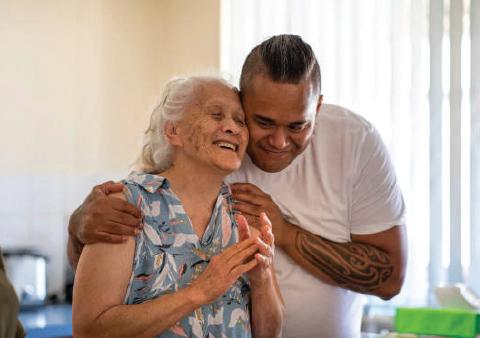
Data
Using Health Data
As noted in the Data Lever in United Way’s Equity Framework, using data is a critical strategy for advancing equity. Consistent use of disaggregated data helps surface persistent racial gaps and disparities, better understand who is most impacted by an issue, and identify root causes so that United Ways can work with other stakeholders to develop equity centric goals and strategies.
When conducting an inventory of available data to understand community level health, it is necessary to expand the scope of the data collection beyond access to health care, insurance, and health outcomes. Social determinant of health measures, such as educational attainment and employment, are key pieces of the data puzzle to achieving health equity.
Included below are data points, many of which United Ways can access publicly and track to demonstrate progress (or challenge) in advancing equity and improving health outcomes. The list is not exhaustive but focused on a vital few data points that should be disaggregated by race, gender, income level, ability status, and geography (where available). Where data does not exist, United Ways can partner with public health departments, hospital systems, local advocacy organizations, data centers, and others to help fill these critical information gaps. Indicators labeled with an asterisk (*) are included in United Way’s common measurement framework, the Global Results Framework.
Indicators
- View Healthy Community Indicators
-
Access and Participation
- Percent of students in elementary, middle, and high school who meet physical activity recommendations
- Percent of adults (aged 18 years and over) engaged in no leisure-time physical activity
- Percent of elementary and secondary schools and early childcare settings that are trauma-informed
- Access to bike lanes and trails
- Proximity to public parks
- Percent of people living in food deserts
- Percentage of population who are food insecure
- Percent of students participating in the School Breakfast Program
- Percent of eligible students participating in the Summer Food Service program
- Number of individuals receiving to number of individuals eligible for SNAP benefits, based on income
Outcomes
- Self reported physical health status
- Self reported mental health status
- Number of deaths due to any cause per 100,000
- Percent of children and adolescents with obesity
- Percent of adults with obesity
- View Healthy Mothers and Babies Indicators
-
Access and Participation
- Percent of pregnant women who receive prenatal care
- Percent of women who are screened for postpartum depression at their postpartum checkup
- Percent of women/families participating in home visiting programs
- Percent of children who have received recommended vaccinations by their 2nd birthday
Outcomes- Rate of infant deaths per 1,000 live births occurred within the first year of life
- Maternal deaths per 100,000 live births
- Percent of infants weighing less than 2,500 grams at birth
- View Health Care Insurance and Access Indicators
-
Access and Participation
- Percent of adults who have a regular physician
- Percentage of adults who reported not seeking medical care or dental care due to cost
- Percent of children and adolescents under 18 years received care in a medical home
- Percent of people under age 65 who have any kind of health insurance
Outcomes- Percentage of adults reporting racial discrimination in healthcare settings in the past 12 months
- Percentage of preventable emergency room rates
Key Health Data Sources
The national data sources listed below are places to gather health data. This list is not exhaustive but provides a starting point for identifying data that can be used to contextualize and deepen understanding of gaps in access and connections to health disparities in the community your United Way serves. In addition, some of the resources below focus specifically on gathering and analyzing data through a health equity lens.
• City, County, or State Health Departments — Community Health Needs Assessments, local Behavioral Risk Factor Surveillance System reports, Vital Records data including births, deaths, marriages, and domestic partnerships.
• Local Planning Commissions — provides information on transportation availability, green spaces, municipal ordinances, etc.
• Centers for Disease Control and Prevention — Behavioral Risk Factor Surveillance System, Morbidity and Mortality reports, Healthy People 2020, National Center for Health Statistics, data and statistics by topic area.
• US Census Bureau — develops the yearly American Community Survey which provides details on a variety of topics across the areas of social, economic, housing, and demographic.
• U.S. Department of Agriculture’s Economic Research Service (USDA) — provides a number of tools related to food security and access.
• Health Resources and Services Administration — focuses on data related to geographically, isolated, economically, and medically vulnerable populations.
• County Health Rankings and Roadmaps — provides data about multiple factors that influence health and increase health equity, measures the health of nearly every county in all 50 states.
• Hope Initiative — resource that tracks state level social determinants of health and health outcomes by race, ethnicity, and socioeconomic status.
• The Trust for Public Land – ParkScore index tool which evaluates public park land and access for major U.S. cities.




